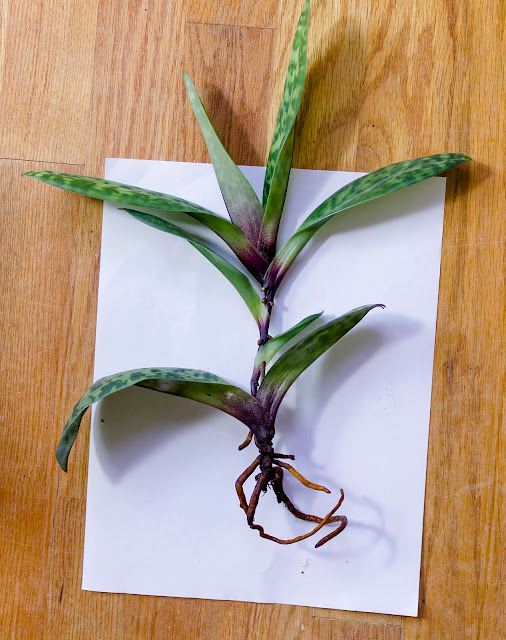Noid Paphiopedilum
I'm not sure what to do with my noid paph. Last year's new growth keeps growing ever taller, and ever farther out from the media. The stem on the growth keeps producing little root nubs which fail to grow. Meanwhile, it keeps producing more leaves, making the whole thing ever taller and more unstable.
My biggest worry is that if this year's newest growth appears high up on this stem, then there will be no way to bring its roots anywhere near the potting media.
Paphiopedilum roots
Although it hasn't been a year since the last repotting, I was a little concerned about the media taking a long time to dry between waterings. Fortunately, all the roots were healthy. They were also completely unchanged from last January. I don't know what it would take to get this orchid to grow new roots into the media.
I cleaned out the pot with a lysol wipe and a good wash, added fresh media, and put the paph back in, much as it was before. The orchid shed one of its bottom leaves during the process (it had been only losely attached), but there is yet another new leaf growing from the crown. To try and help promote at least a few more roots to grow from the stem, wrapped some sphagnum moss around the base, which I'll try to keep evenly moist.












































